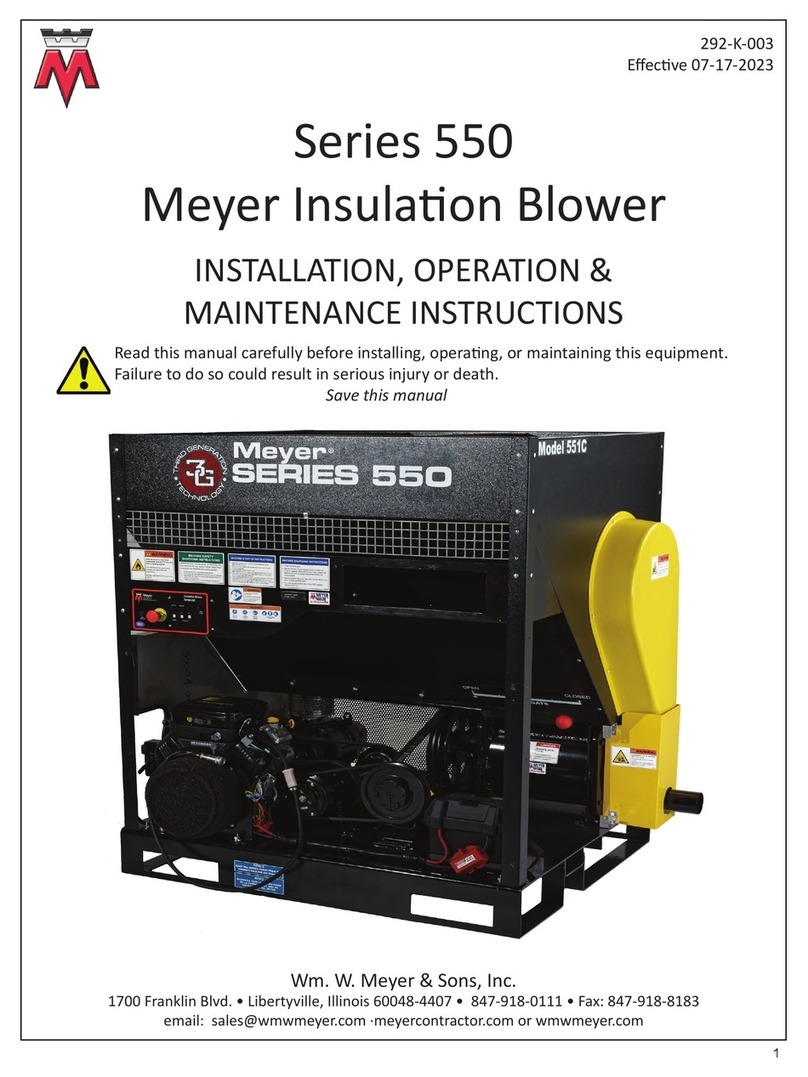
8
1. Move the machine into posion nong that you will need to have access to the rear and le side of
the machine. With the machine in posion; mark the truck oor where the engine exhaust (on the
le side) will go through the oor and mark the base’s mounng hole locaons.
2. The machine can be le in place or moved to provide beer access to the areas that need to be
drilled/cut. Using an 1/8” bit, drill pilot holes to determine if there is anything under the truck oor
that would interfere with the mounng fasteners or the engine exhaust pipe. If there is; move the
holes accordingly.
3. Cut a 3” hole in the oor for the exhaust pipe. Install the ashing (included), center it in the hole
and tack it down.
4. Drill holes for the machine mounng bolts. The size depends on what type and size of fasteners
you are using. Secure the machine to the truck oor.
5. The blower is at the back of the machine. Install the blower inlet screen into the elbow on the inlet
of the blower. The screen is shipped with the machine accessories.
The engine and engine exhaust piping could be extremely hot and could cause
burns. In addion; if ammable material comes in contact with these surfaces
it could ignite. Due to the variability of installaons Meyer cannot provide a guard for the engine
exhaust piping. The installer of the equipment must take the necessary steps to guard this surface from
contact.
6. Install the exhaust pipe and ngs (not included). Be sure to securely aach both ends of the
exhaust extension.
SECTION V
OPERATING INSTRUCTIONS
Before starng the machine check that no foreign material is in the hopper, that the
blowing hose is connected and the hose operator is in posion. Ensure that the only
people around the machine are those involved with its operaon.
Explosive fuel can cause res. Do not overll the fuel tank. Allow room for
expansion of the fuel. Fill the tank away from the engine and avoid spills. The
fuel tank must be in contact with the ground before and during lling. Do not let the fuel line come
in contact with the exhaust system. Fuel for this machine is highly ammable; failure to follow these
precauons could lead to a re and serious injury or death.
Engine exhaust contains carbon monoxide, a poisonous gas that will kill you in
minutes. You CANNOT see it, smell it, or taste it. Even if you do not smell exhaust
fumes, you could sll be exposed to carbon monoxide gas. If you start to feel sick, dizzy, or weak while
using this machine, shut it o and get to fresh air immediately. Seek medical aenon immediately.
You may have carbon monoxide poisoning.
The surfaces of the engine and exhaust can be extremely hot. Do not touch, allow to
cool before servicing.
Open all doors on the truck body/trailer and wait 10 minutes before starng engine.
This venlates fuel vapors and reduces the risk of res and explosions.






























